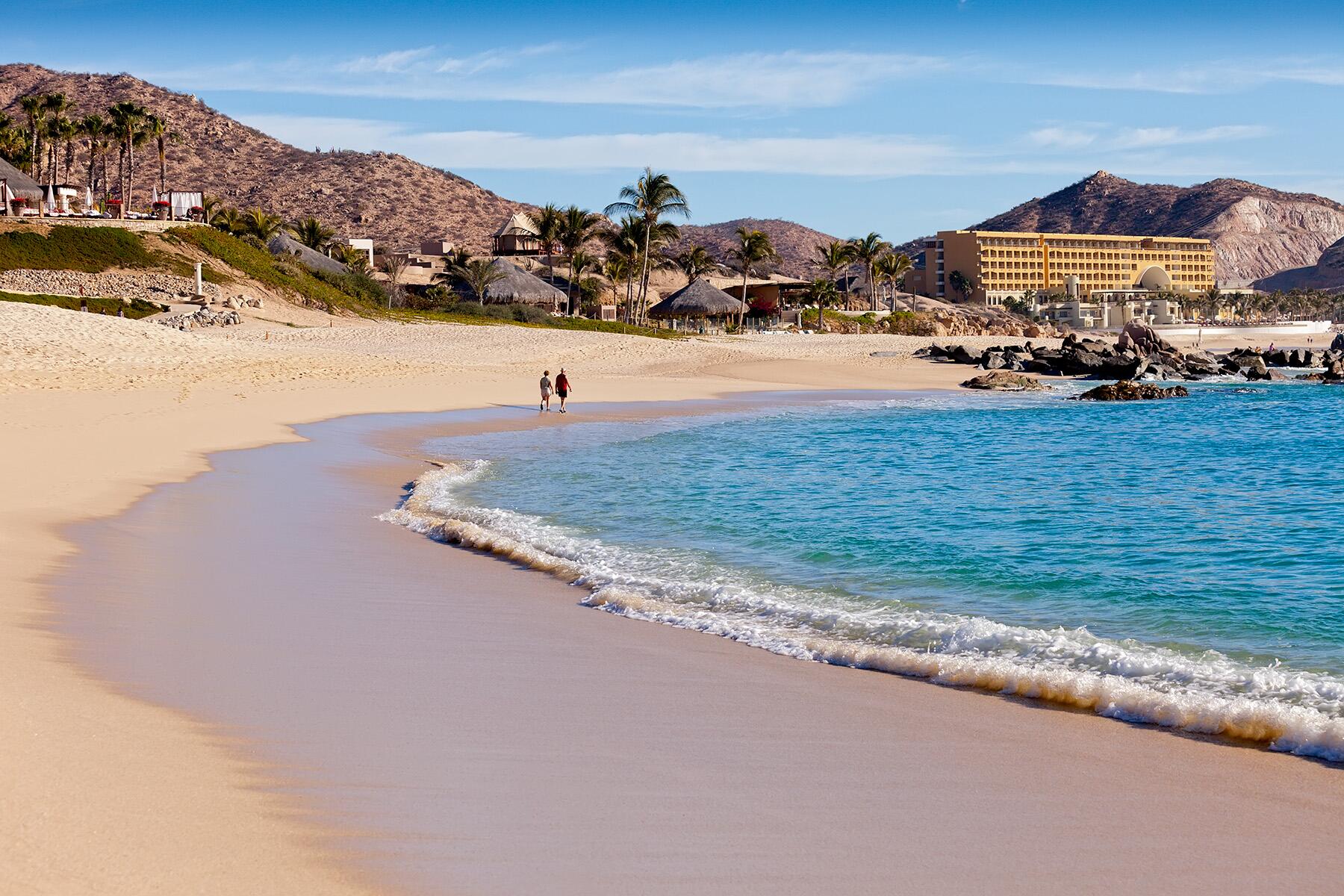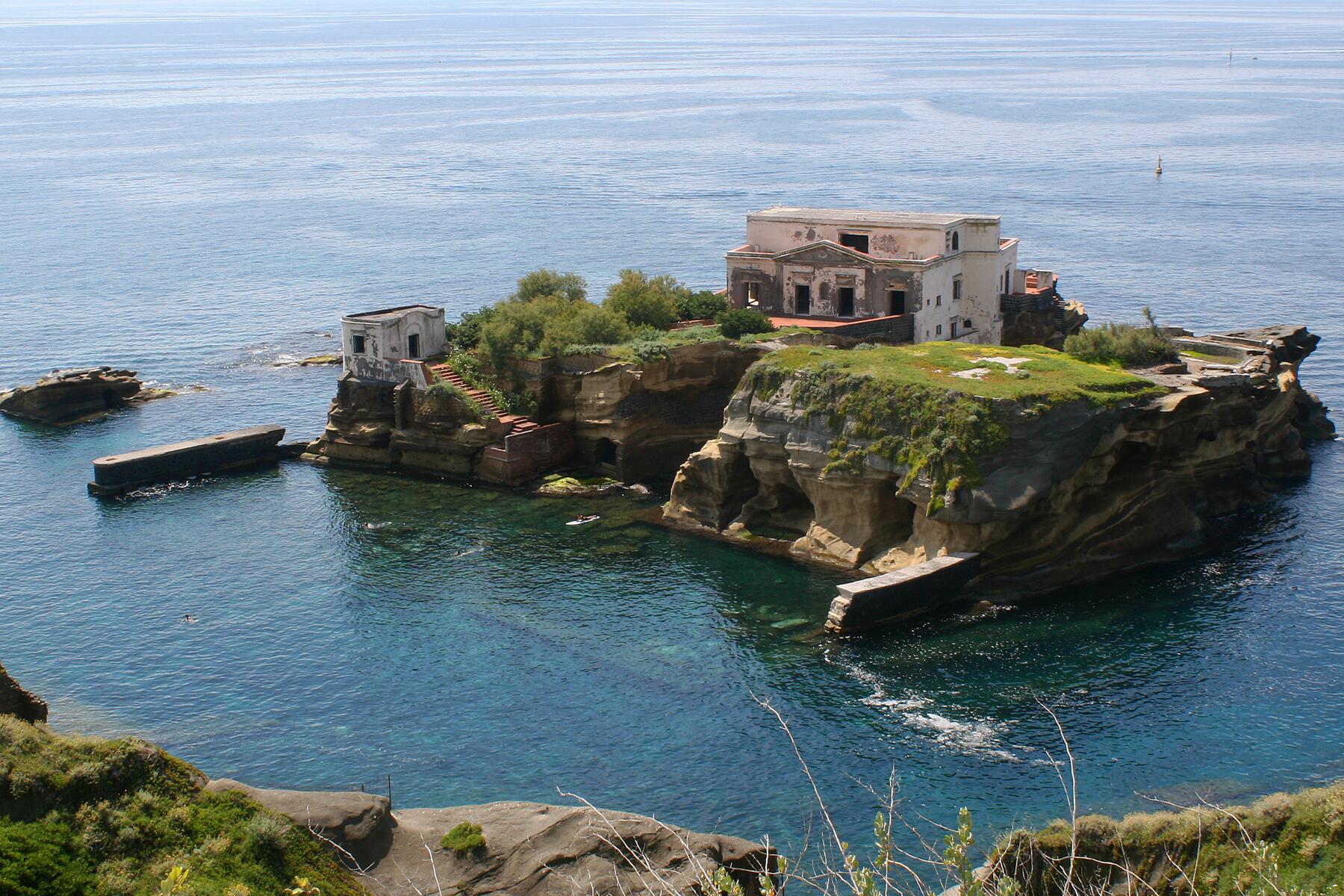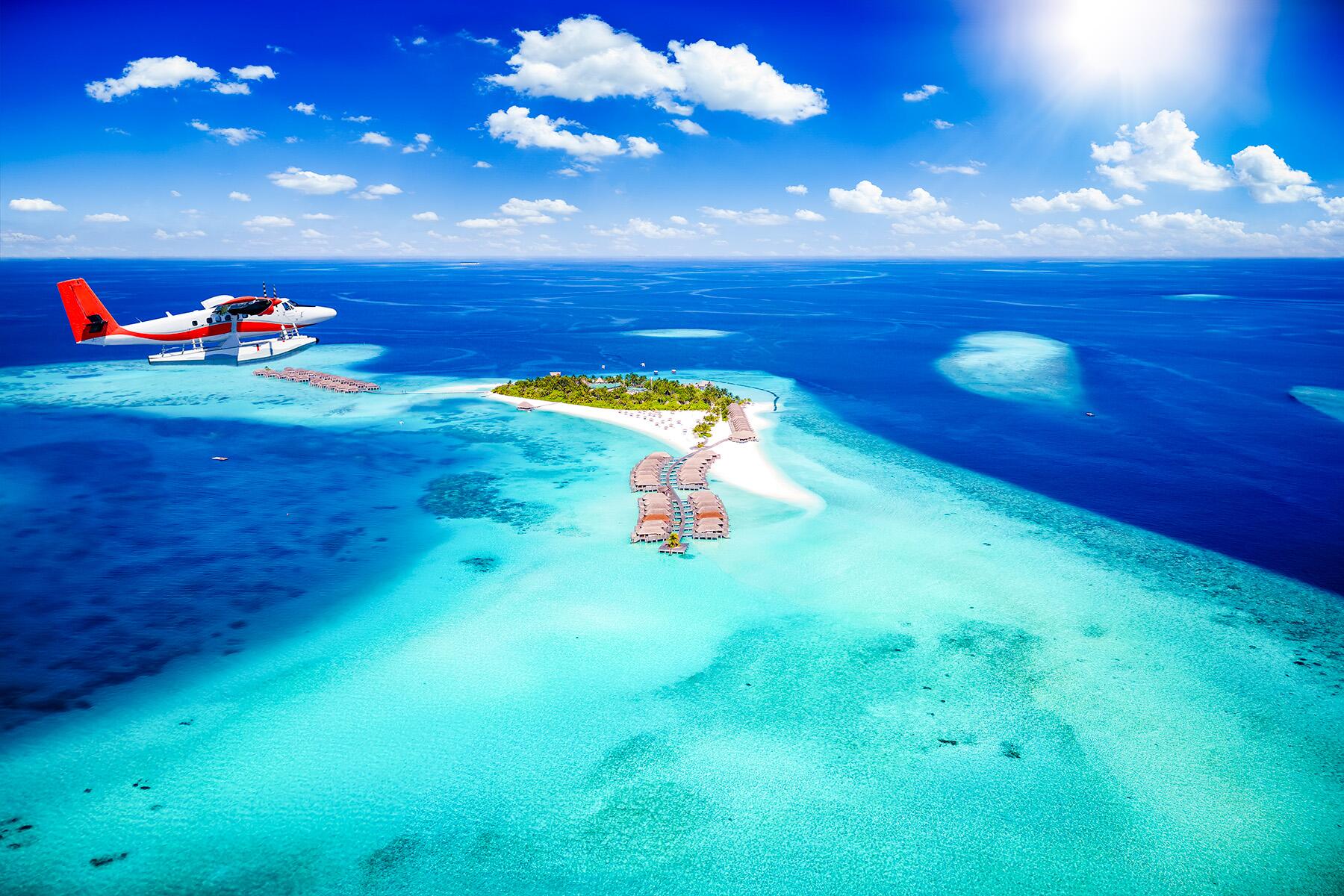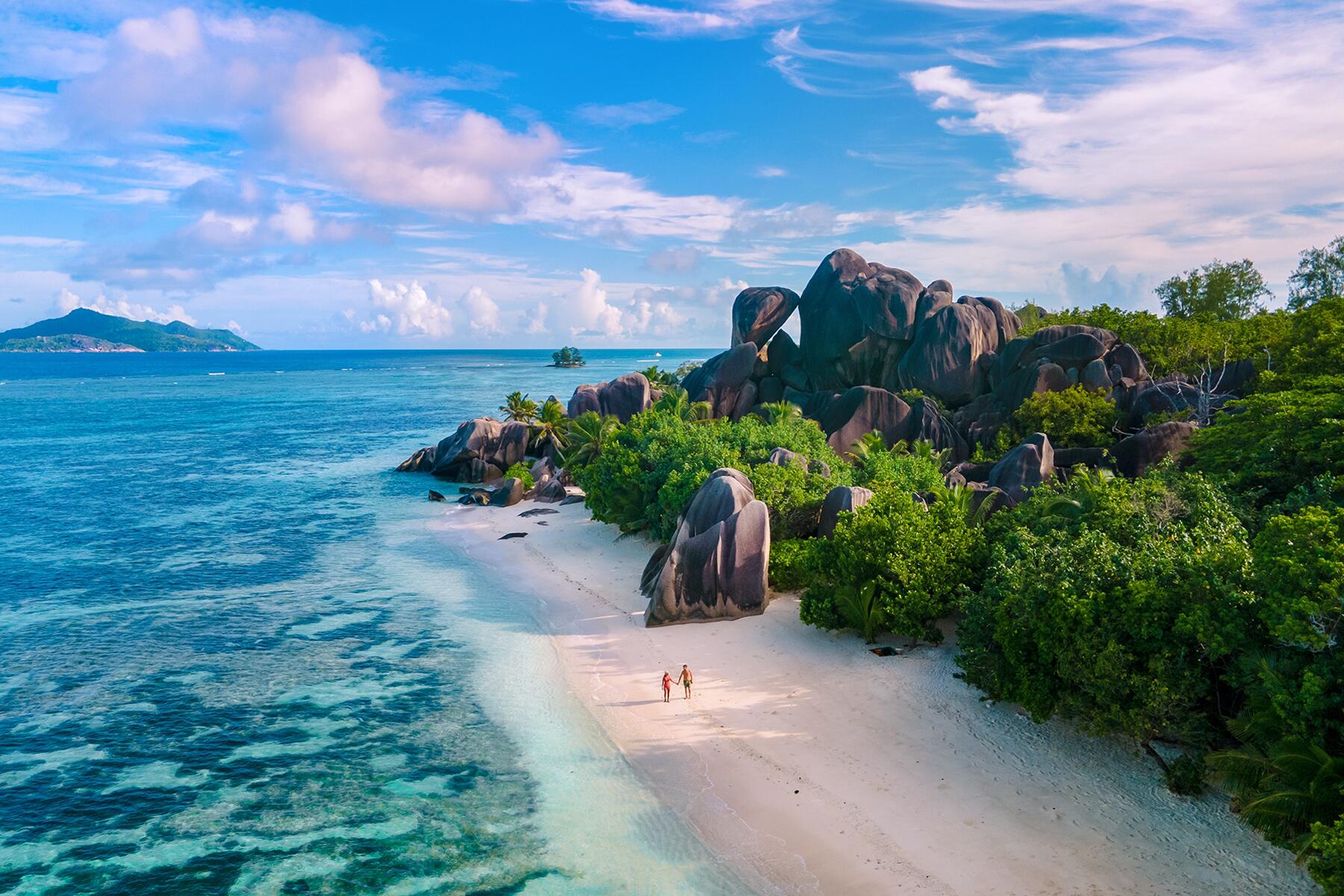- ⁄
- Travel News
- ⁄
- Beaches •
- History
Slather on the sunscreen and soak in these beachy snippets of wisdom.
From coastal and rocky to glassy and green, we now know beaches as fun-filled places to catch waves and rays, and have leisurely laid-back days. But it wasn’t always this way. These havens of respite have previously been viewed as threatening wildlands where pirates ran rampant, natural disasters claimed lives, and terrifying monsters lurked beneath the surface. The world’s beaches are home to fascinating history, enthralling trivia, and even swimming pigs. Here are 13 fun facts about beaches that might blow you out of the water.
Top Picks for You
How the Modern Beach Retreat Came to Be
If you’re a beach lover, you have the English to thank. As the story goes, the modern seaside resort was born in Britain during the Industrial Revolution. Compared to factory workers, the elites were seen as feeble and fragile, causing physicians to prescribe them restorative visits to the beach to cure a variety of ailments. Brighton, Scarborough, and Margate were some of the first coastal communities where English aristocrats went to rid themselves of gout, leprosy, rickets, melancholy, and impotence with the healing powers of sea bathing and fresh air.
The Explosive Origins of the Bikini
You know the bikini as an item of clothing, but it was a place first. The iconic women’s beachside garment was created by French engineer-turned-designer Louis Réard. He hoped the outfit, which was “smaller than the world’s smallest swimsuit,” would have an explosive arrival. Therefore, he named it after the nuclear tests the United States had conducted at Bikini Atoll in the Marshall Islands. The belly button-exposing two-piece swimwear indeed had a headline-grabbing debut in 1946 on 5 July, which is now international bikini day. Unable to find a professional model to wear the risqué design, Réard hired Casino de Paris nude dancer Micheline Bernardini to pose in the outfit.
Recommended Fodor’s Video
There’s Something Fishy About White Sand
White sand beaches are some of the most revered in the world. But did you know that they are the result of parrotfish feces? These flashy fish have prolific appetites and use their hard, fused teeth to munch on dead corals. Unable to metabolize the coral skeletons, they excrete kilos and kilos of it as white sand. In essence, they poop out paradise
The Doctor That Specializes in U.S. Beaches
Stephen P. Leatherman goes by the moniker Dr. Beach and since 1991, he’s been releasing an authoritative list of America’s Best Beaches on Memorial Day weekend. He doesn’t just have a penchant for placing towels on sandy spots, however. He’s the Professor and Director of the Laboratory for Coastal Research at Florida International University (FIU) and he holds a Ph.D. in Environmental (Coastal) Sciences from the University of Virginia. The scientist has 50 criteria for judging public beaches in the U.S., including sand softness, water color, litter, noise, and views. This year’s winning beach? Ocracoke Lifeguarded Beach in the Outer Banks of North Carolina.
The Super Exclusive Diving Destination
Diving is a popular activity for water lovers and beach fans, but there’s one exclusive destination that’s been visited by fewer people than the number of travelers to the moon. The Mariana Trench in the Pacific Ocean is the greatest known depth in the world. It is deeper than Mount Everest is tall, and only a handful of people have visited it due to unfavorable conditions, including extreme pressure and perpetual darkness. The first explorers glided down in a submersible vessel back in 1960. The next expedition was more than 50 years later by none other than Titanic and Avatar director James Cameron who completed the challenge solo.
Hawaii Gave the World Two Beach-Based Olympic Sports
Beach Volleyball has been an Olympic discipline since 1996 but it was reportedly first played on Waikiki Beach in Honolulu as far back as 1915. It would later be popularized and turned into a competitive sport in 1930s California. Surfing’s roots can also be traced to Hawaii, where royals rode the waves using surfboards called olo made from wiliwili trees. This sport of kings entered the Olympics during the Japan 2020 games though some of the biggest pro surf competitions (like Pipeline Masters) still take place on home turf in the Aloha State.
Swimming Cabins for Women
Female swimmers on European beaches in Georgian and Victorian times were required to prepare in swimming cabins. Also known as bathing machines, these were dressing rooms on wheels that would be carted into the water by horses (or human power), all in the name of modesty. Ladies could thus escape straight into the sea without their scandalous, improper attire being seen by the opposite sex. The decency ideals of the time also encouraged women to wear cumbersome, layered outfits that restricted movement. To prevent showing off their legs, women would sew weights into the hems of their swimming garments.
Jewel-Colored Beaches
White, tan, black, and brown sand typically spring to mind when thinking of beaches, but you can actually sunbathe on sand that’s as sparkling as a gemstone. Around the world, there are also pink, green, purple, and black beaches that you can sink your feet into. Bubblegum pink sand beaches exist in The Bahamas, Greece, and Indonesia, while green sand beaches can be found in Norway, Guam, Hawaii, and Ecuador. Hawaii alone has sands painted in vivid red, black, gold, and powdery white hence its longstanding popularity with beach lovers.
The Location of the First Public Beach in the U.S.
Over a century ago, on July 12, 1896, Revere Beach in Massachusetts became the first public beach in the United States. At its peak, as many as 250,000 frolickers and fried clam lovers from in and around Boston descended on the beachside destination during sweltering summer days. They enjoyed some of the first amusement parks in the country and gasped for breath on what was then the world’s largest and fastest rollercoaster, The Cyclone.
The Most Instagrammable Beach in the World
Competition is fierce but one showstopping beach in Seychelles consistently ranks as the most photographed beach on the planet. Anse Source d’Argent beach in La Digue is no typical shoreline. Sweet dreams are made of these shimmering white sands with climactic granite boulders dotted around coupled with no-need-for-snorkel-gear-clear water. Your camera will love it all.
The Longest Pleasure Pier in the World
Stretching for more than a mile, Southend Pier in Essex, England, is the longest pleasure pier in the world, complete with its very own railway. This over-water gem in southeast England dates back to 1829 when the first stone was laid. It was constructed to lure more boats to dock there and thus compete with rival beach resorts like Margate in Kent. For a pleasurable time at this English landmark, sign up for a round of crazy golf, take in the pier museum, and sample obligatory seaside staples at the Fish and Chips Beach Hut.
The Caribbean Beach With Swimming Pigs
You would normally expect to swim with sea creatures like fish, manta rays, or turtles when you head to the beach but on one island in The Bahamas, it’s pigs that rule the roost. Big Major Cay is famed for its resident pigs that wade the turquoise waters. No one is quite sure how the swine ended up with such a covetable Caribbean Sea postcode though. One theory holds that they paddled over to the uninhabited island from a shipwreck. Some say a group of sailors abandoned them during a storm back in the 1990s. Today, Pig Beach is one of the most visited destinations in The Bahamas.
Hitting the Beach Without Hitting the Water
From Miami to Maui, there are countless sandy places to plunge and make a splash in the U.S. However, 27% of beachgoers reportedly don’t set foot in the water at all. A study published in the Journal of Water and Health found that out of 54,250 surveyed individuals in the country, over a quarter stay totally dry when visiting the beach. Of those that do venture in, about one-third (34.9 percent) don’t put their heads under the water either. Beyond swimming, the beach is a place to rest, dream, play, and a wonderful way to spend any summer day.





This beach-themed item dropped again into my mailbox...
I see no reply to my previous questions. Meanwhile I got another one:
why is Mariana Trench segment included in the beach trivia?
Also it would be very appreciated if you include location names for all photos you publish!
Thanks in advance.